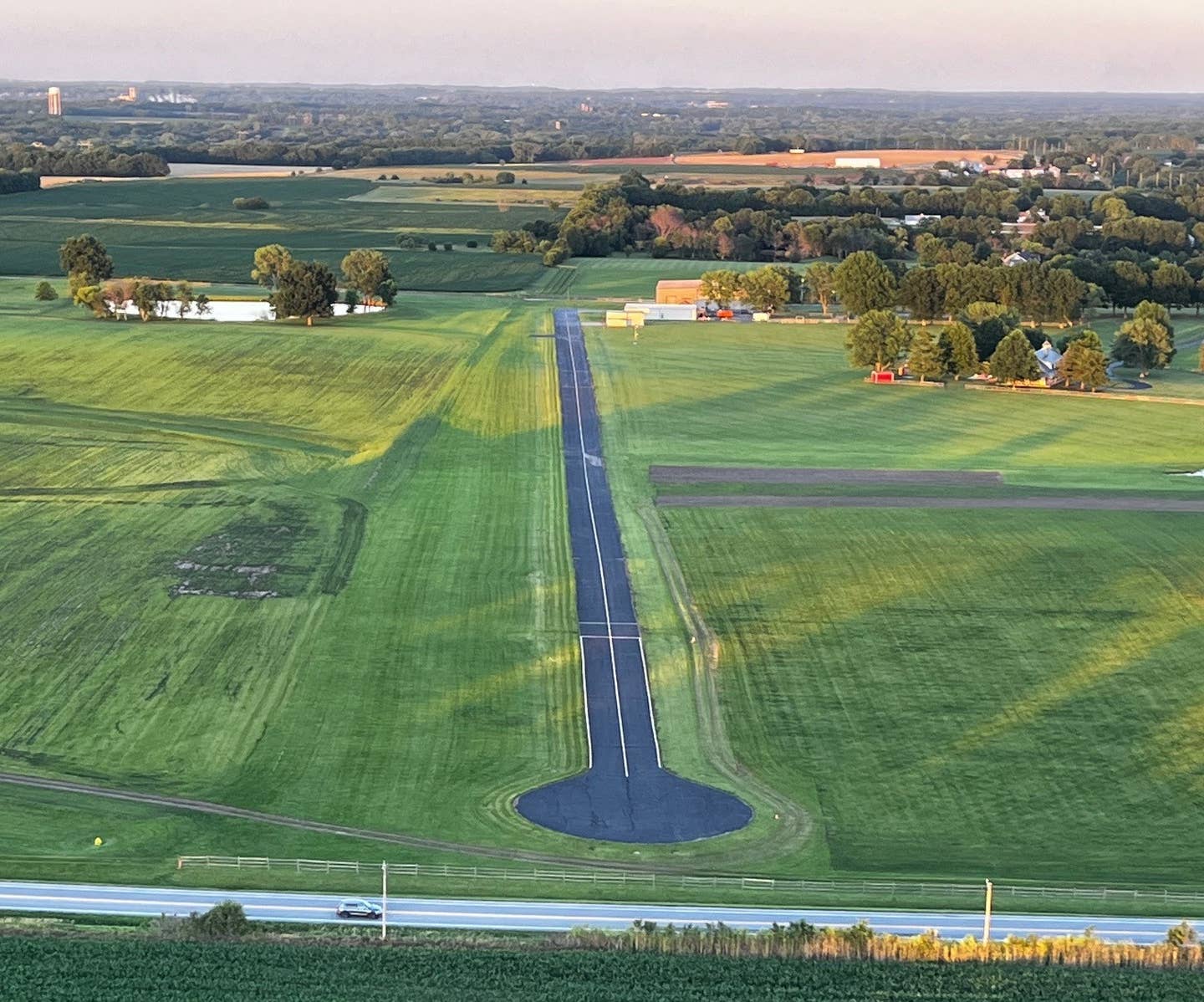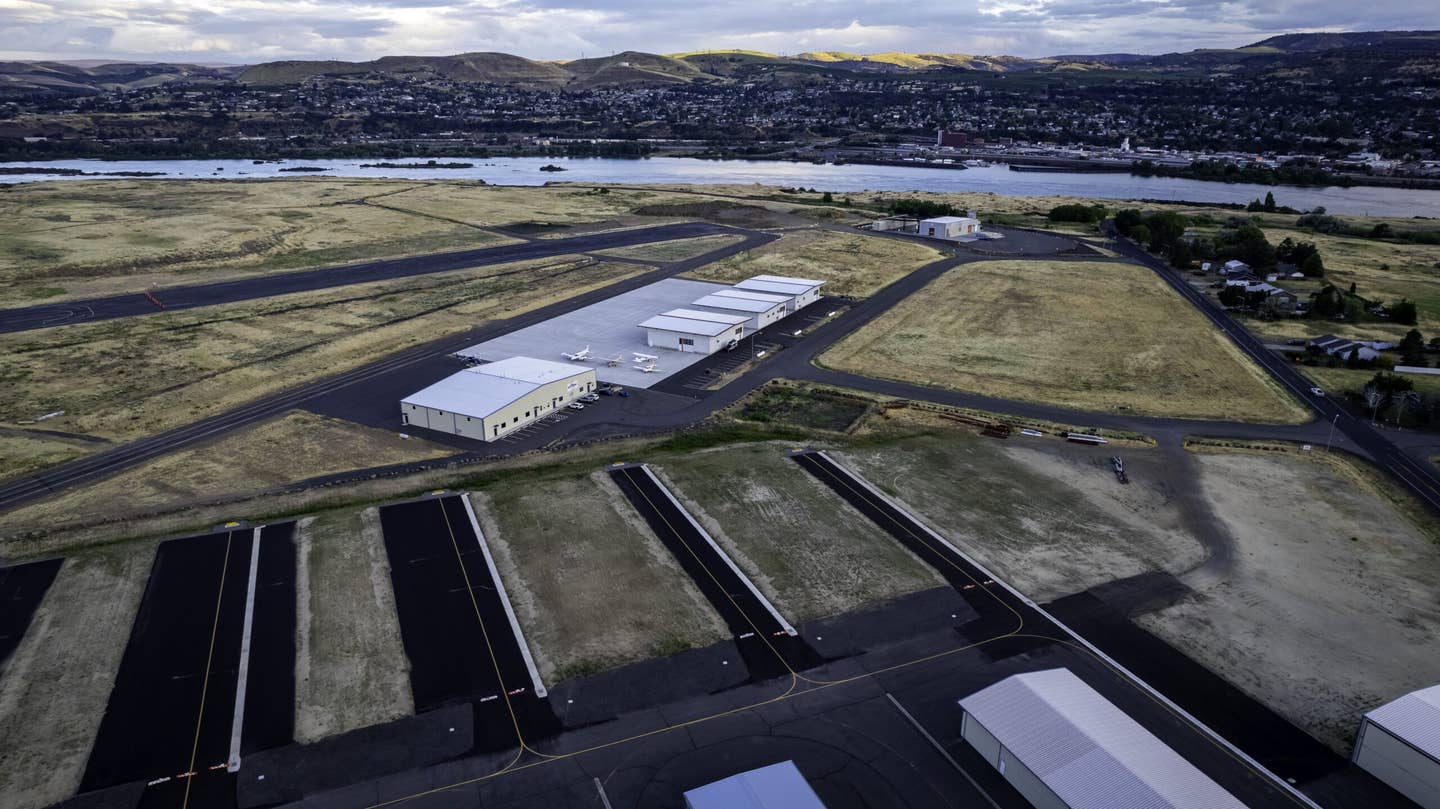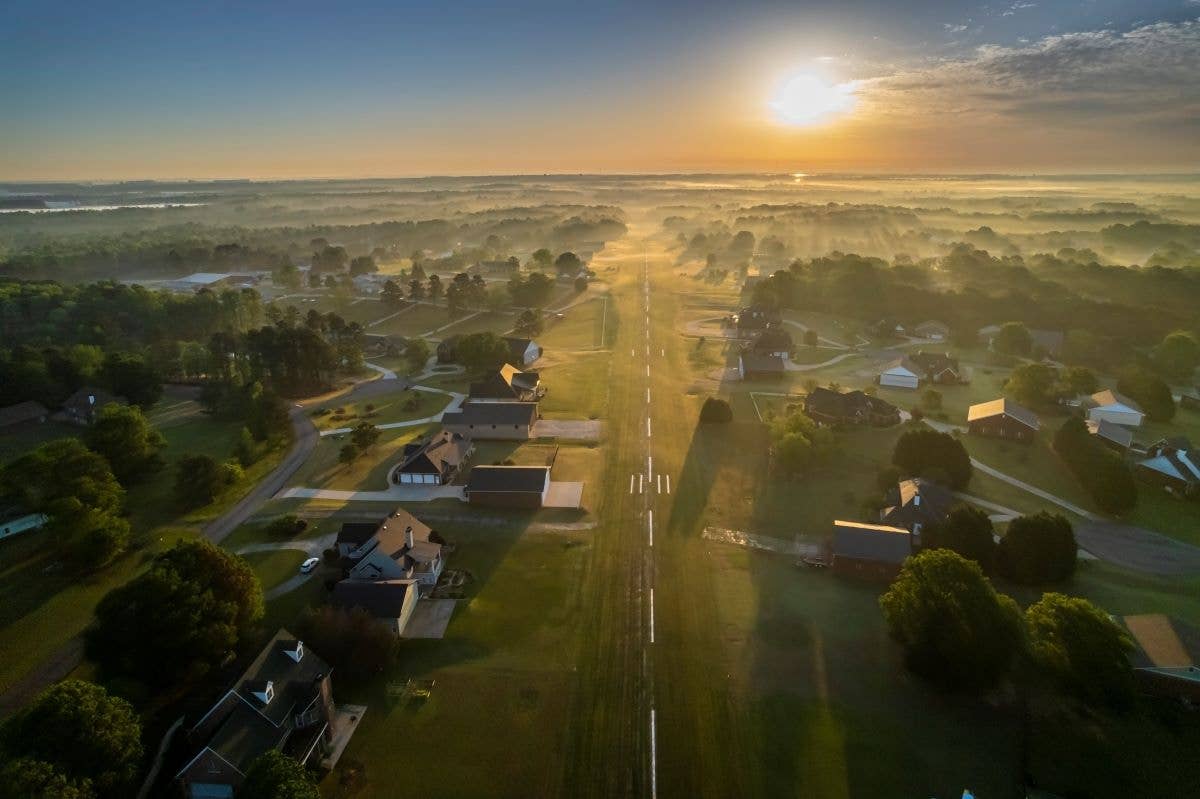Rebuilding Crawford County Airport
The trajectory of Crawford County, Illinois, and its nearly 20,000 residents, was forever changed on March 31.
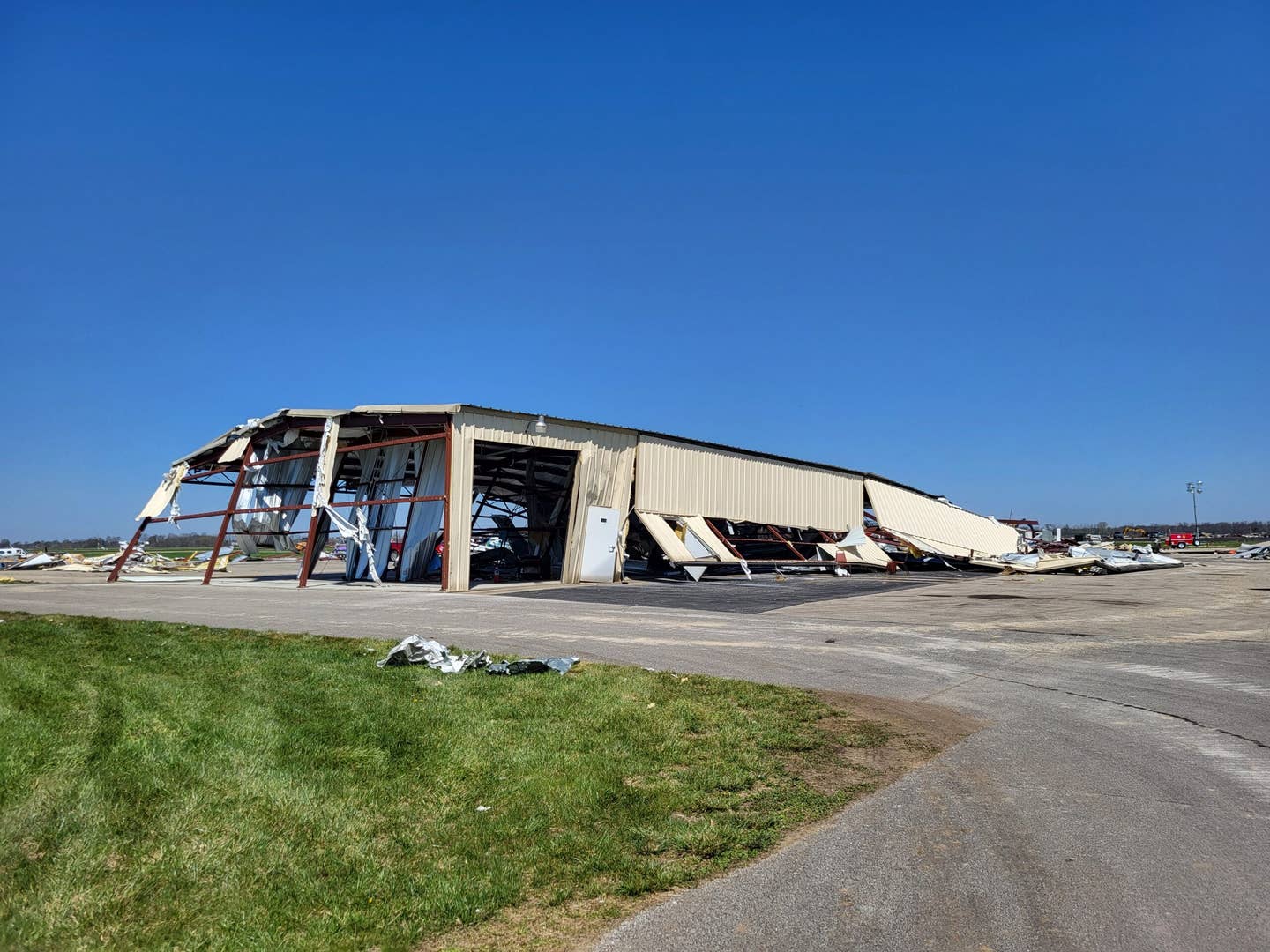
A hangar that was still standing, albeit barely, after the EF3 tornado that hit the Crawford County Airport (KRSV) in March. [Credit: Vicki May]
The trajectory of Crawford County, Illinois, and its nearly 20,000 residents, was forever changed on March 31. At 10 that evening, an EF3 tornado ripped through the town and caused millions of dollars in damage.
Three lives were lost in the storm and many more were injured. Reports also stated that several hundred structures were toppled by the tornado. Its path of destruction included one of the region’s most important assets—Crawford County Airport (KRSV), whose infrastructure will be changed for years to come.
Vicki May, a board member and secretary for the Crawford County Airport Authority, explained the impact the storm had on the airport.
“Here with me right now are four of us,” May said. “We have Jeff Boyd, my husband, who lost his plane in the storm. Then we have Howard Hunt and Sandy Staszak, who run the FBO on the field. They lost their business, planes, everything. So, they are trying to get their business back, the airport authority has been trying to get the airport back, and our pilots are trying to get some kind of plane back.
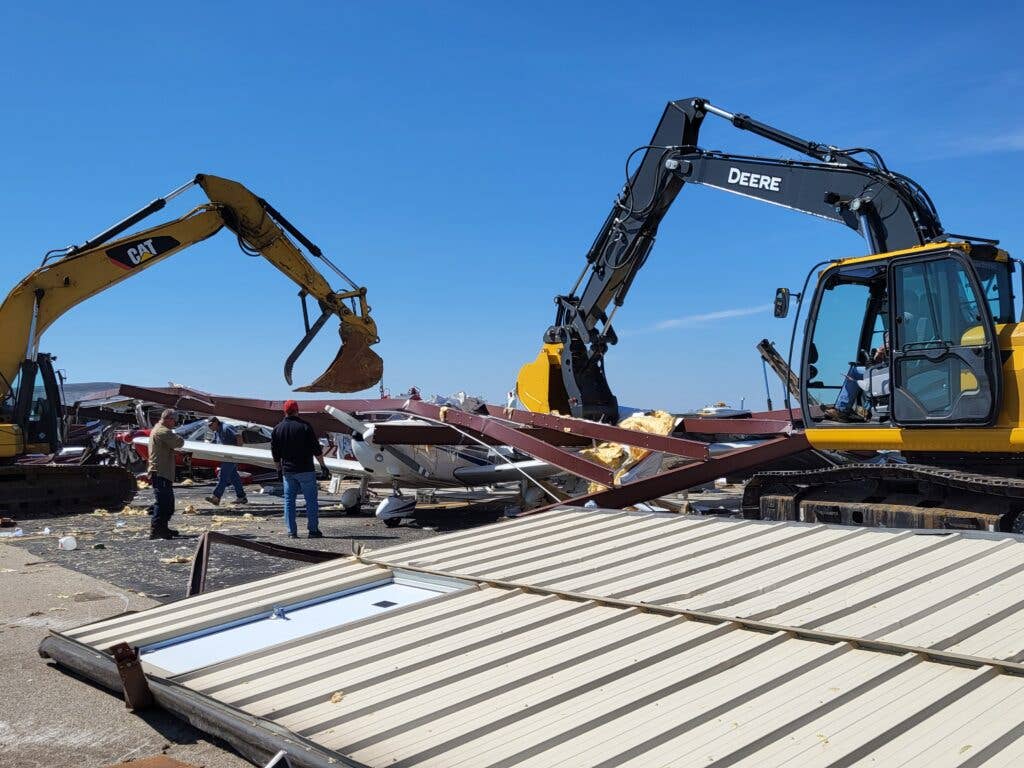
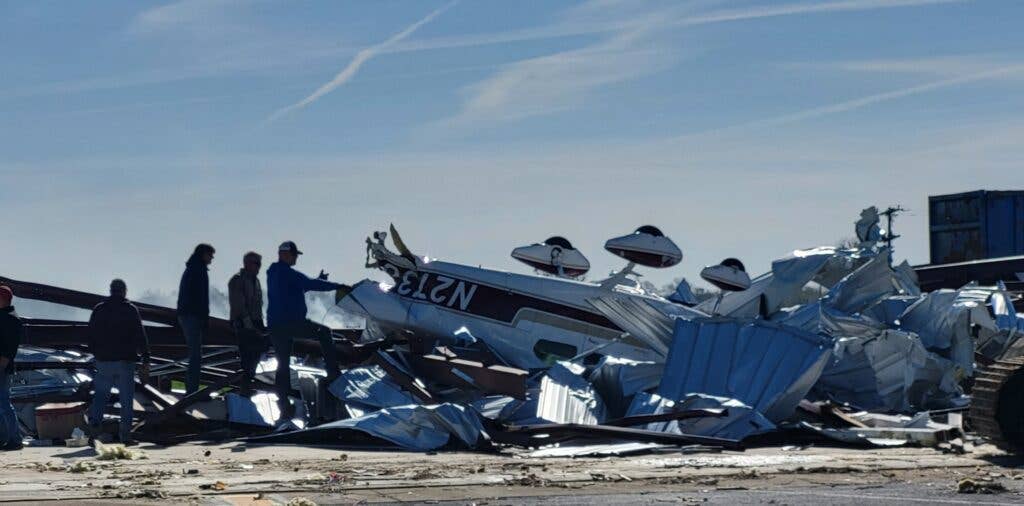
“The tornado completely destroyed the airport, as you can see in pictures. We had two large maintenance hangars, 18 (spaces) T-hangars, and 19 planes that were here for various reasons—whether based here or being worked on. I think every single one of the planes was totaled, along with the hangars that I mentioned and multiple vehicles, including our maintenance vehicles and courtesy cars. Most of us were insured for a prop strike, taxiing into a light, or something like that—not to lose everything—everything. I said it when the TV station came out to interview me, [and] it’s true. There is a lot of heartbreak out here.”
The carnage was so bad that everything was leveled, including the airport office. Formerly a stout building made of concrete blocks, May said that there weren’t two that were left mortared together. Volunteers were quick to get started on cleaning up the destruction, including removing balled up T-hangars and airplanes from adjacent fields. Even with the many hands, it took several weeks to pick up the pieces of the airport that were scattered about.
“We are insured like everybody else, although we are not getting enough to put back everything the way that it was—much less make it better,” May said. “We want to be better than before, but we have to find the money to do that. The insurance company is going to give us money to replace what was here, and we can’t even totally do that. So, we are out looking for grants, maybe even some loans, or the possibility of issuing bonds. We did have some money saved up, but that will go pretty quick, and we have to be fiscally responsible with taxpayer money.”
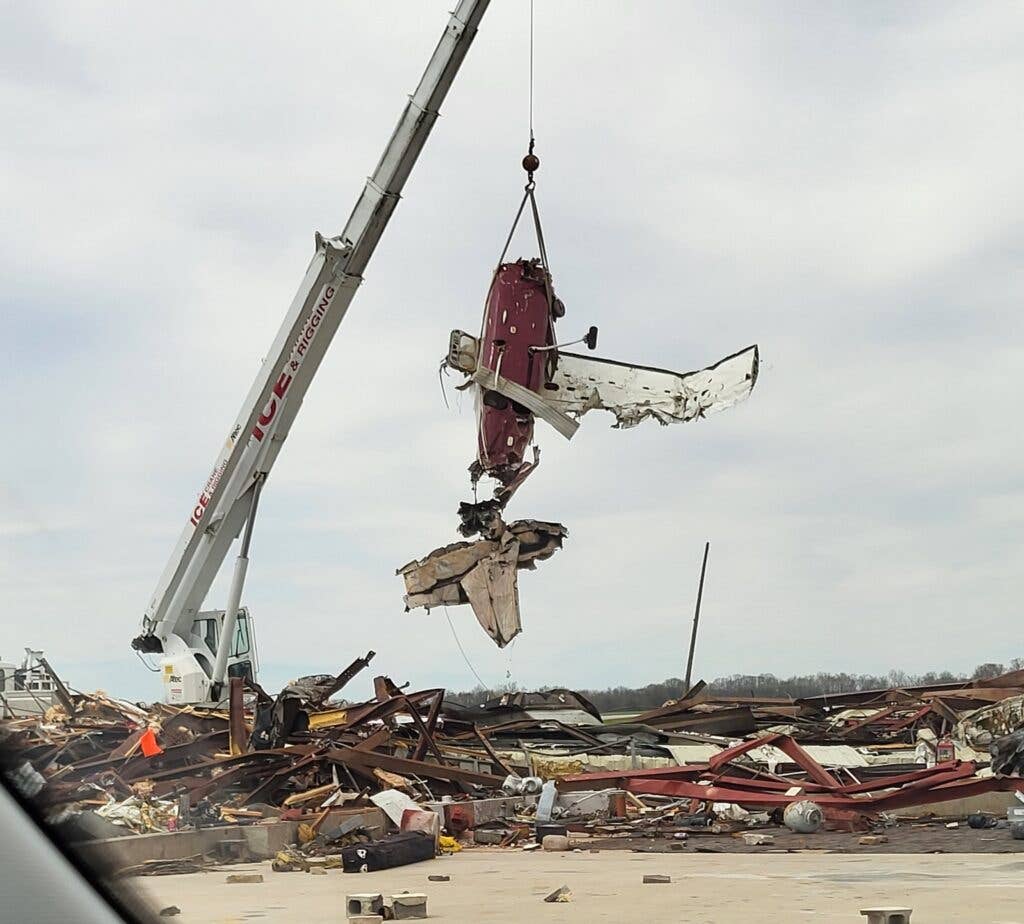

Not ruminating on their losses for too long, airport stakeholders enthusiastically began working to bring the airport back to what it was before. It has a bright future, they said—especially considering its impact upon local industry and the nearby hospital.
“We already had several projects that we were working on right before the tornado,” May said. “We had just built a brand-new pole barn to store all of our tractors and other equipment. Of course, that’s gone now. Then there is a government program to renovate older terminal buildings, which we were actually going to apply to be a part of and remodel our office to be more functional. Now we have to build one from scratch. Ironically, the T-hangars were fairly new, because they had been hit by a tornado a few years ago.
“We are currently pouring concrete for construction of one large maintenance hangar and for the replacement T-hangars. Most of the steel has been delivered. We hope to have them completed this year. We have applied for state and federal funding to rebuild the terminal building with offices, classrooms, and a storm shelter. I want to add [that] the FAA has been very involved and helpful in trying to get us some grant money to get back on our feet.”
The airport has not gotten fuel services back, being that the testing to return the system to service has been a lengthy process. But operations are starting to pick back up.
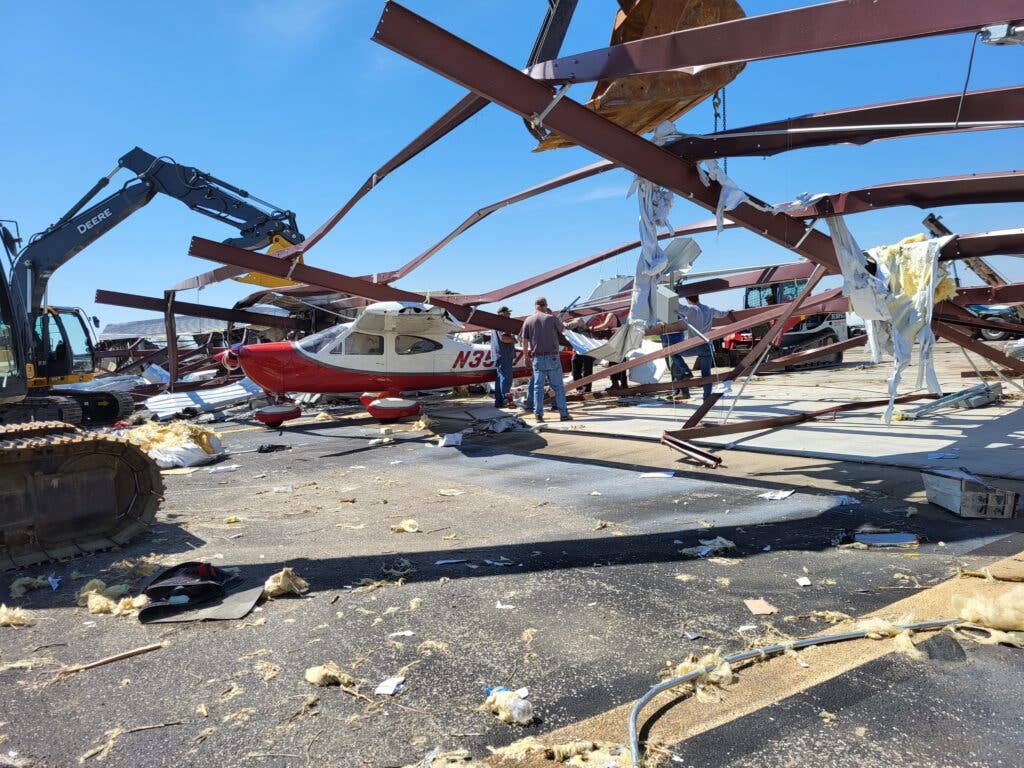
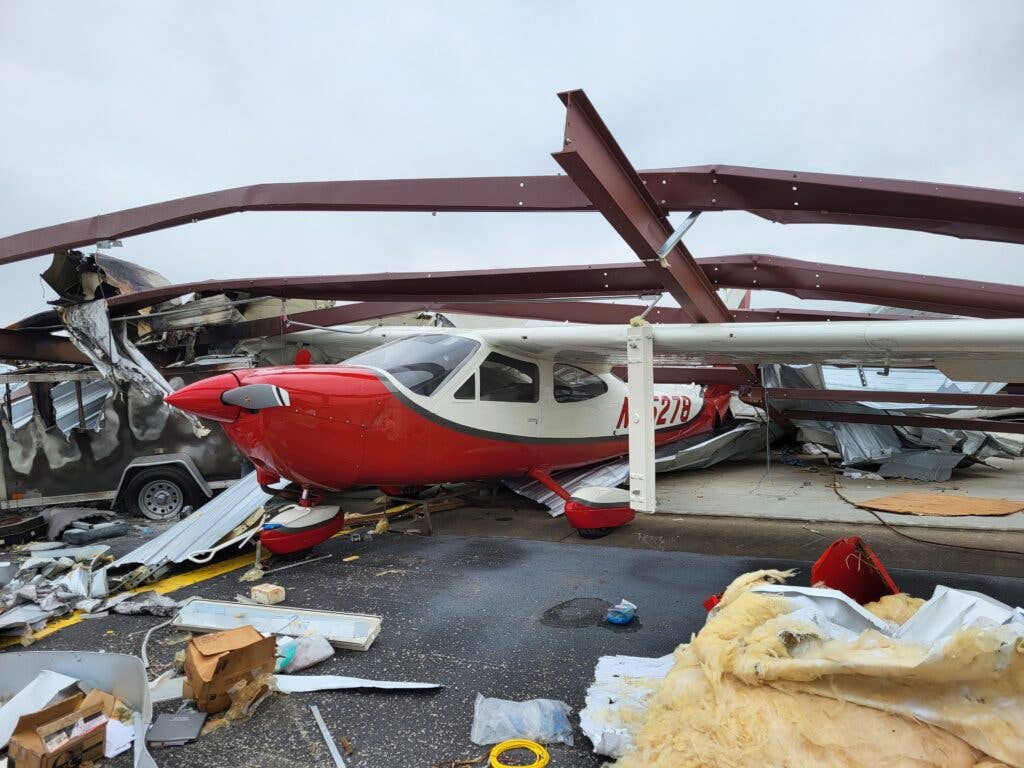
“The air traffic to industries, the hospital, etc. has ramped back up,” May saud. “Local traffic is still very sparse since we went from many airplanes based here to [currently] one, and it has to sit outside. We believe once we have hangars built, we’ll start to see more planes and local traffic. Once we can provide fuel, we’ll see more planes stopping for refueling. Once the FBO has a maintenance hangar again, we’ll start to see planes coming and going for maintenance and repairs.”
Those who were based at the airport have shown their resiliency. The list of local pilots who were impacted by the storm included a May high school graduate, Jared Hermann. The tornado blew through only three hours before Hermann was scheduled to take his private pilot check ride. His airport being leveled was only a minor inconvenience, as he would go on to pass his check ride only a few short months later in July.
“The tornado brought my training to a complete halt,” Hermann said. “I was training in Howard and Sandy's [flight school] at the time, which was lost in the tornado. It took a while for things to calm down, but I stayed patient while evaluating my options on how to continue my flight training. While I was trying to find another airplane to fly, I concentrated on my ground school training. Since we couldn't find a good airplane to rent in the area, my father (Mark) and I purchased an airplane so that I could finish my flight training.”
Hermann advised that he is pursuing a career in aviation as an airline pilot. He is presently enrolled at Southern Illinois University in its aviation program and comes back to Crawford County Airport as much as he can to build time in he and his dad’s Piper PA-28-140.

Subscribe to Our Newsletter
Get the latest FLYING stories delivered directly to your inbox

